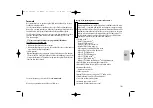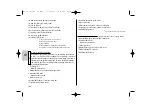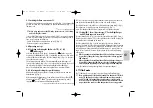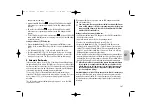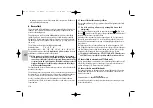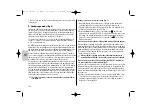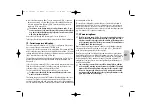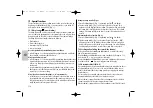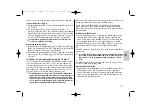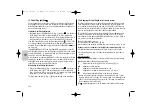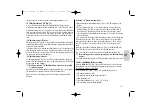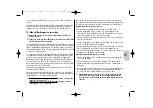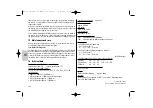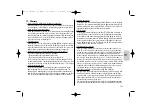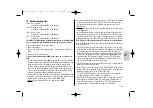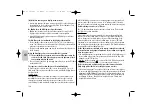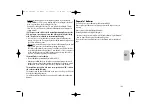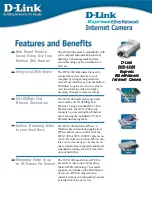
115
ķ
4
Select the flash frequency f(Hz). Turn the setting disk
(Fig. 1) anti-clok-
kwise until the arrow is next to f(Hz). Depress the setting disk and turn to
select the required flash frequency f(Hz). Store this setting by renewed
depression of the setting disk.
The distance to the moving subject is used as distance value. To pre-
vent overexposure of the static this part of the picture should either be
very dark or far behind the moving subject. Best results are achieved
with a low ambient light level.
Ensure that a sufficiently slow shutter speed is set on the camera.
Table 3 specifies the fastest camera shutter speeds for the N - f(Hz) combinations.
10. Correct exposure indication
The correct exposure indicator ”o.k.”
(Fig. 1) only lights up if the picture
was correctly exposed in automatic or TTL flash mode.
This gives the user the opportunity to fire a test flash while in automatic flash
mode so that the correct aperture can be established beforehand. This is par-
ticularly valuable with bounce flash when reflection conditions are difficult to
judge. A test flash cannot be fired in TTL mode.
The test flash can be triggered with the manual firing button
(Fig. 1) provi-
ded that this button has not been programmed for „Modelling Light“ (see
Chapter 12.).
If the o.k. exposure indicator
(Fig. 1) remains dark after the test flash was
fired, then adjust the next lower f-number, or diminish the distance to the
reflecting surface or subject, and repeat the test flash.
The f-stop established in this manner must also be set on the camera.
To trigger a test flash, hold the camera and flash unit in the same
manner as for the actual shot!
This facility can also be used with TTL mode without having to produce test
exposures. The flash unit is adjusted to automatic mode, and the correct
aperture is then determined with a test flash in the previously described man-
ner. The established aperture is transferred to the camera and the flash unit is
☞
☞
then readjusted to TTL mode.
This procedure is relatively accurate with lenses of medium focal length of
between 28 mm and 85 mm. However, in borderline cases, underexposure
may result in TTL mode. In such an event the o.k. exposure indicator will re-
main dark after the shutter has been released. Select the next larger aperture
(e.g. f/8 instead of f/11) and have another try.
11. AF measuring beam
The AF measuring beam
(Fig. 2) can only be activated by autofocus
cameras that support the AF measuring beam of the flash unit! Some
autofocus cameras only support their own built-in AF illuminator (refer
to the operating instructions for the given camera). The mecablitz must
be fitted with an SCA 3xx2 adapter!
Please note when selecting the camera’s autofocus mode that most cameras
only support the AF measuring beam in the „Single AF“ or „One-Shot AF“
mode (see operating instructions for the camera)!
The AF measuring beam is activated by the camera electronics when the am-
bient lighting conditions are insufficient for automatic focusing. The AF beam
projects a striped pattern on to the subject, and the camera uses this pattern to
focus automatically. The AF beam has a range of 9 m (with a 50 mm f/1.7
standard lens). Low-speed zoom lenses can significantly curtail the range of
the AF measuring beam.
Some autofocus cameras have several AF metering fields in addition
to the central AF metering area in the camera’s viewfinder. The striped
pattern of the AF measuring beam only supports the camera’s central
AF sensor. Consequently it may be necessary to adjust the central AF
sensor manually on the camera (see the operating instructions for the
given camera and the SCA adapter).
☞
☞
704 47 0099.A3 54 MZ-4i 01.02.2007 13:41 Uhr Seite 115

